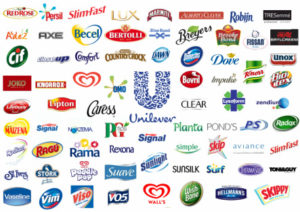 Whether it be FMCG, Leisure & Entertainment, Healthcare, Technology, it’s hard to find a sector these days that doesn’t have prominent portfolio groups existing within it.
Whether it be FMCG, Leisure & Entertainment, Healthcare, Technology, it’s hard to find a sector these days that doesn’t have prominent portfolio groups existing within it.
A question I’m frequently asked is what role the parent brand should have with the sub-brands in a portfolio business. It’s an interesting question, and we need to start by defining the structure of the group. From a brand architecture standpoint, there are different types of portfolio, however the two most common are – the House of Brands (Unilever, PepsiCo, Mitchells and Butlers) and Branded Houses (Apple, Virgin).
I’m focusing on the House of Brands model, where essentially the sub-brands, or products are the primary focus of the consumer, and in many cases they may be unaware of any relationship to the parent brand.
 Each sub-brand’s audiences will have their own needs, however the common factor is that they all crave trust. We are conditioned to build trust in things based on the (positive) consistency of our experience with it. Building lasting brand loyalty is first achieved by gaining your audiences’ trust. To be trusted you need to be consistent.
Each sub-brand’s audiences will have their own needs, however the common factor is that they all crave trust. We are conditioned to build trust in things based on the (positive) consistency of our experience with it. Building lasting brand loyalty is first achieved by gaining your audiences’ trust. To be trusted you need to be consistent.
If a parent brand has built a strong reputation based on its consistency then it can be beneficial to distill the values and vision of that brand down and across the portfolio. This doesn’t mean that the sub-brands all have to look and act the same as the parent brand, or all be targeting the same demographics – far from it. However sharing a collective vision and joint resources can deliver huge business benefits.
There are more pros, and cons, to raising the visibility of the parent brand. Another pro being that a parent brand’s pre-existing customer loyalty helps establish a strong base from which to launch new brands/products. Customers or clients who are loyal to the parent brand will be more likely to display the behaviour of preference over an associate product than with another. In essence the goodwill of the parent brand makes it easier to launch new products or services as reputation and trust is pre-established and you’re not starting from zero with regards to a customer base.
 On the flip-side a potential con could be the ripple effect. As a highly visible parent brand you’re only as strong as your weakest sub-brand. In the case of a portfolio of brands with a visible parent brand, ultimately they would need to step up and be seen to take responsibility should a scandal hit any of their sub-brands.
On the flip-side a potential con could be the ripple effect. As a highly visible parent brand you’re only as strong as your weakest sub-brand. In the case of a portfolio of brands with a visible parent brand, ultimately they would need to step up and be seen to take responsibility should a scandal hit any of their sub-brands.
It is however also possible to operate a third type of model that sits in-between the House of Brands and Branded House models. Say, for example if your portfolio consists of both B2B and B2C functions. The B2B products/services may fare better with the endorsement of the parent brand at the helm, however the B2C brands may thrive where they have the chance to build trust and loyalty independently. Or in the world of FMCG there’s Kellogg’s as an example.
The parent brand has a strong pre-existing association and reputation within the cereals category; therefore the Kellogg’s brand is prominent across the cereal sub-brands such as All-Bran and Coco Pops – reinforcing their specialism and standard. However the parent brand takes a back seat with the likes of Pringles and Mother’s Cookies as the snacking category is not where its reputation pre-existed.
Deciding whether to invest in the role and behaviour of the parent brand can be a tough decision to make. Ultimately it will depend on two factors: ONE – the levels of brand trust and loyalty that pre-exist with the parent brand, and TWO – having a solid understanding of your customer base and what their needs are. Taking the time to conduct thorough insight across the portfolio customer base will help to determine how best, or if at all the parent brand needs to feature.
Article by Nalla’s CEO, Vicki Young
About Vicki:
 Vicki graduated from Kingston University with a first-class degree in Graphic Design and earned two D&AD yellow pencils. Her career began working and collaborating with retail brand New Look, The London Mayor, Vodaphone and The Royal Opera House.
Vicki graduated from Kingston University with a first-class degree in Graphic Design and earned two D&AD yellow pencils. Her career began working and collaborating with retail brand New Look, The London Mayor, Vodaphone and The Royal Opera House.
In 2010 Vicki started her own branding agency Nalla, an agency that ensures the digital revolution isn’t ignored when creating a brand and uses technology as a tool within brand design.
As the sole founder and creative director of Nalla she has helped clients across a variety of sectors to build brands that are digitally robust and globally flexible ensuring Nalla has ambitious clients across the globe.
Recent clients include the award-winning rebrands of IMUK, .tickets, Informa, Waitrose and Kaleido as well as currently collaborating with EY and Greene King.
Opinion pieces frequent various blogs with recently printed articles appearing in The Times, and Web Designer magazine.
Source: Nalla

You must be logged in to post a comment Login